
Machine learning can process massive amounts of data, solve scientific problems in complex scenarios, and lead scientific exploration to new areas that were previously unreachable. For example, DeepMind uses the artificial intelligence software AlphaFold to make highly accurate predictions of almost all protein structures known to the scientific community; the particle image velocimetry (PIV) method based on deep learning proposed by Christian Lagemann has greatly improved the original purely manual setting of parameters. The application scope of the model is of vital significance to research in many fields such as automobiles, aerospace, and biomedical engineering.
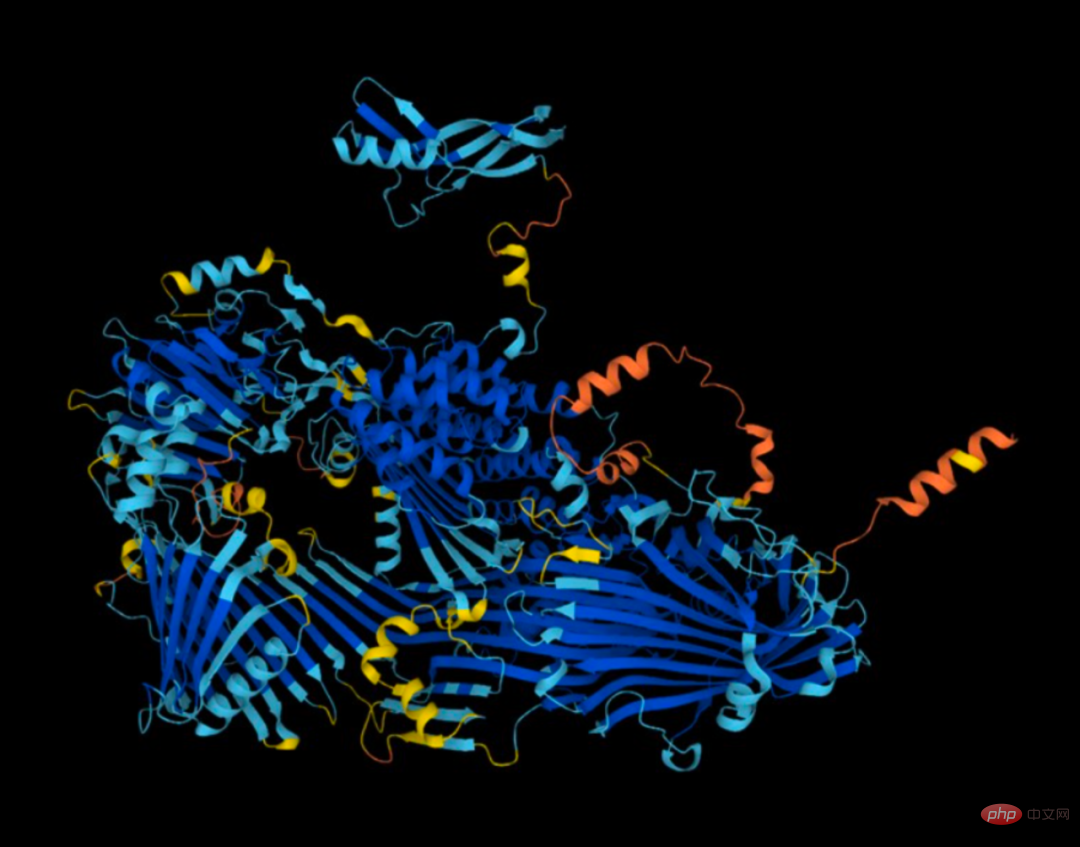
AlphaFold can predict the structure of almost all known proteins (Source: DeepMind)
With sufficient data and an accurate model to describe the scientific problems to be solved, many "hundred-year-old mysteries" in basic science can be solved by machine learning. Such as fluid mechanics, condensed matter physics, organic chemistry, etc.
Recently, the work "Ab initio calculation of real solids via neural network ansatz" by the ByteDance AI Lab Research team and Chen Ji's research group at the School of Physics at Peking University provides a way to study condensed matter. A new idea in physics, this work proposes the industry's first neural network wave function suitable for solid systems, realizes first-principles calculations of solids, and pushes the calculation results to the thermodynamic limit. It strongly proves that neural networks are efficient tools for studying solid-state physics, and also indicates that deep learning technology will play an increasingly important role in condensed matter physics. Relevant research results were published in the top international journal Nature Communication on December 22, 2022.
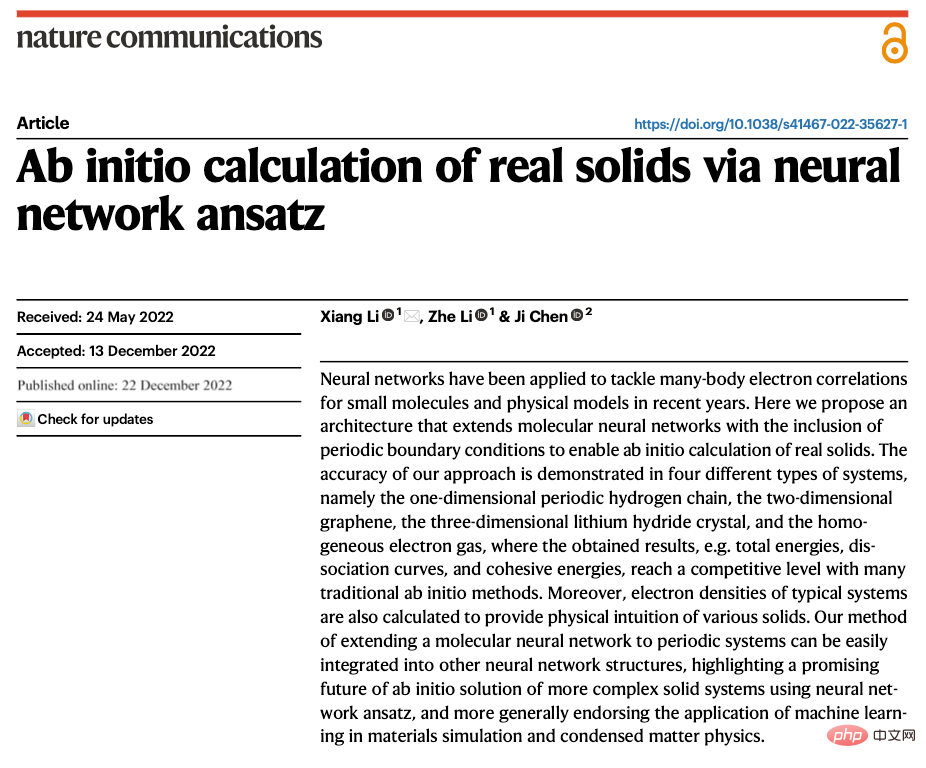
Paper link: https://www.nature.com/articles/s41467-022-35627-1
Accurately solving the Schrödinger equation of solid systems is one of the holy grails of condensed matter physics. In condensed matter research over the past few decades, density functional theory has been widely adopted with great success.
Density functional theory: A quantum mechanical method for studying the electronic structure of multi-electron systems.
Despite this, density functional theory still has many shortcomings: for complex strongly correlated systems, density functional theory cannot provide to produce an accurate description; there is also a lack of systematic methods to improve its accuracy in functional selection. In recent years, compared with density functional theory, the more accurate and universal wave function method has received more and more attention and research.
In view of this situation, the ByteDance AI Lab Research team teamed up with Chen Ji’s research group at the School of Physics of Peking University to design a periodic neural network wave function suitable for solid systems, and combined it with quantum The combination of Monte Carlo methods enables first-principles calculations of solid systems. In this work, deep learning technology was applied to the study of solid systems in continuous space for the first time and pushed the calculation to the thermodynamic limit.
The core of this work is to combine the periodic generalized system eigenvector with the existing molecular neural network wave function to construct a solid with periodic symmetry and complete antisymmetry System wave function. The work then applied quantum Monte Carlo methods to efficiently train neural networks and tested them on a range of real solids.
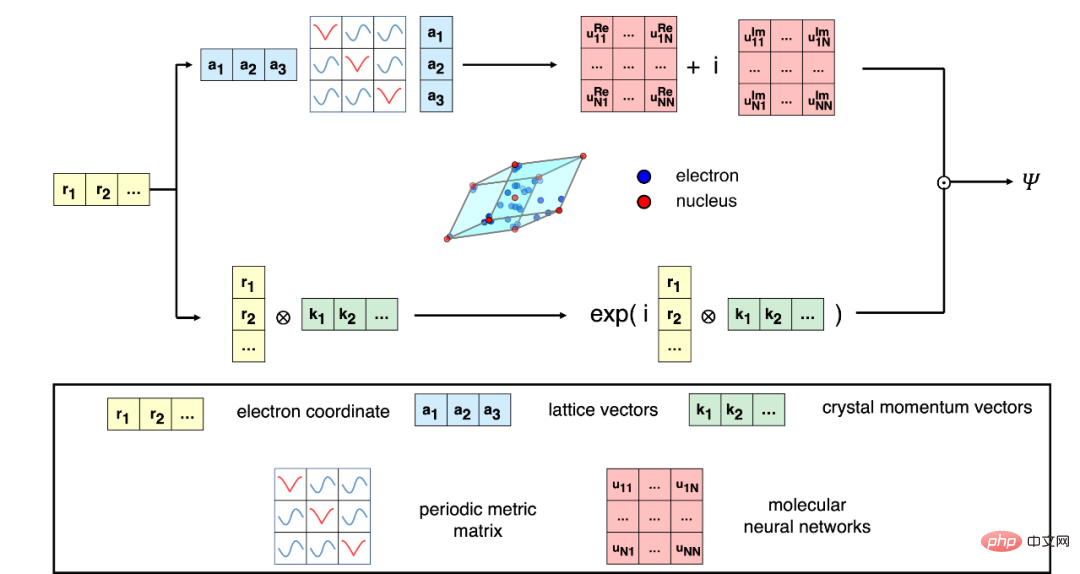
#First of all, the author periodically Tests were conducted on one-dimensional hydrogen chains. The one-dimensional hydrogen chain is one of the most classic systems in condensed matter, and its accurate solution helps people understand the characteristics of strongly correlated systems. Calculation results show that the neural network can achieve accuracy similar to traditional high-precision methods (such as auxiliary field Monte Carlo).
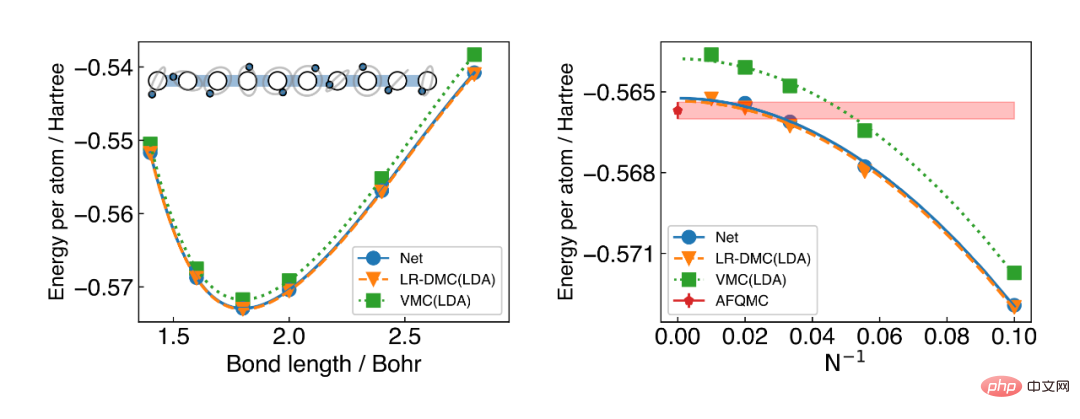
The author then used a neural network to calculate the two-dimensional graphene material. Graphene has been a hot research material in the past two decades. Its unique properties in thermal conductivity, electrical conductivity, etc. have important research and application value. This work accurately calculated the cohesive energy of graphene, and the calculation results were consistent with the experimental data.
#In order to further verify the effectiveness of the work, the author calculated the three-dimensional lithiated hydrogen material and pushed the calculation scale to the thermodynamic limit. The maximum calculation scale reached With 108 electrons, this is also the largest solid system that a neural network can simulate so far. The calculated cohesive energy and bulk modulus of the material are consistent with the experimental results.
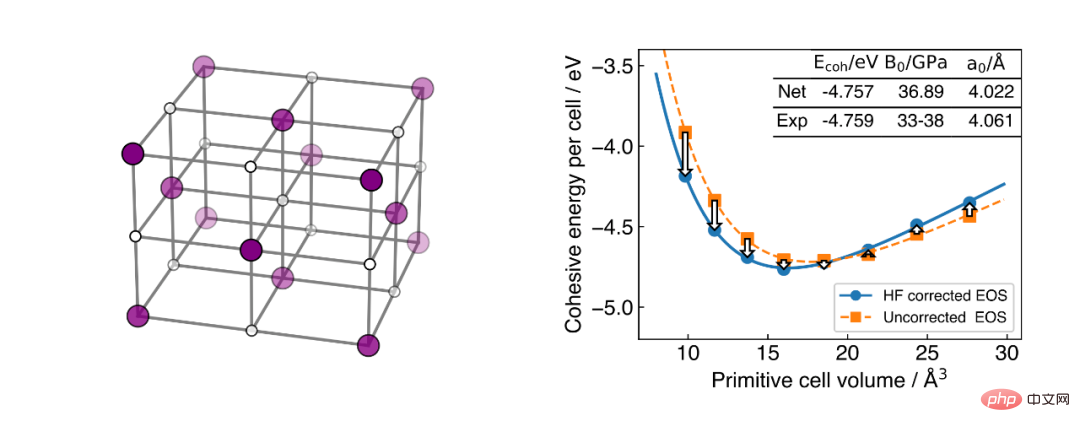
Finally, the author studied the theoretically more interesting uniform electron gas system. The uniform electron gas system is closely related to many novel physical effects (such as the quantum Hall effect), so an in-depth understanding of the uniform electron gas has important theoretical value. The calculation results show that the neural network achieves good results on uniform electron gas, approaching or even surpassing the results of many traditional high-precision methods.
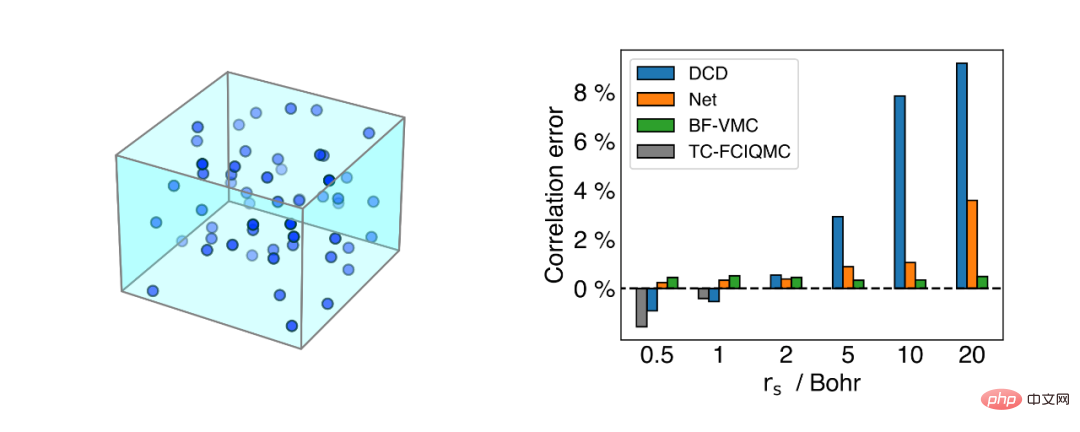
This work strongly proves that neural networks are efficient tools for studying solid state physics. With the further improvement of the algorithm, neural network technology will play a more important role in condensed matter physics: such as phase changes of solid systems, surface physics, unconventional superconductors, etc. Research on these topics requires high-precision solid wave functions as the cornerstone. At the same time, the author is also working on researching more efficient neural network wave functions to provide more possibilities for the study of condensed matter physics.
The above is the detailed content of The industry's first neural network wave function suitable for solid systems was published in the Nature sub-journal. For more information, please follow other related articles on the PHP Chinese website!
 Application of artificial intelligence in life
Application of artificial intelligence in life What is the basic concept of artificial intelligence
What is the basic concept of artificial intelligence How to increase download speed
How to increase download speed Reasons why ping fails
Reasons why ping fails What is the console interface for?
What is the console interface for? Mysql database migration method
Mysql database migration method Usage of typedef in c language
Usage of typedef in c language Windows 11 my computer transfer to the desktop tutorial
Windows 11 my computer transfer to the desktop tutorial



